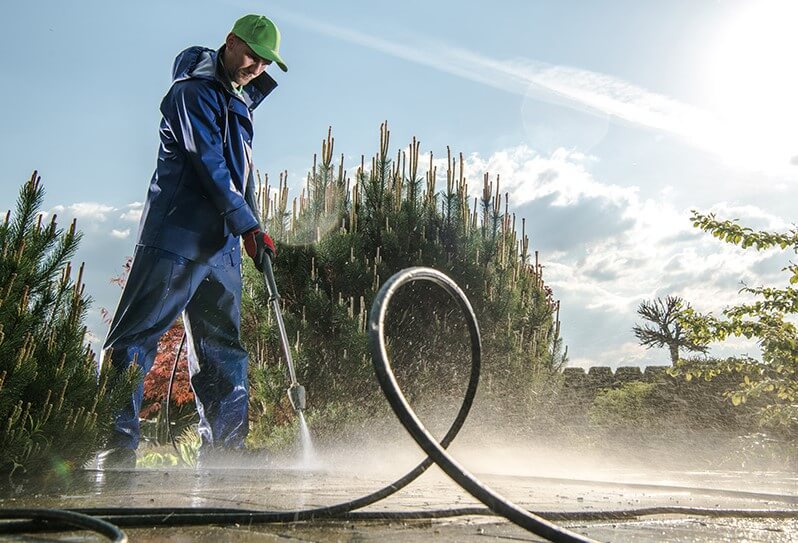Professional Euclid Commercial Washing to Restore Your Business's Exterior
Professional Euclid Commercial Washing to Restore Your Business's Exterior
Blog Article
Effective Strategies for Graffiti Removal That Recover Surfaces to Their Original State
The obstacle of graffiti removal is complex, calling for an understanding of various graffiti types and the most efficient strategies for remediation. From chemical options that provide to details paint structures to push washing approaches that protect the integrity of surfaces, each technique has its merits.
Understanding Graffiti Types
Recognizing the diverse types of graffiti is crucial for effective elimination approaches. Graffiti can be broadly classified into several types, each requiring different strategies for elimination.
Throw-ups are more intricate and usually include larger, bubble-like lettering filled with a single shade. These pieces can cover extra area and may require different elimination techniques contrasted to tags. Murals, on the various other hand, are detailed artworks that can be fairly huge and in-depth, often commissioned or produced with approval. The removal of murals presents distinct difficulties as a result of the capacity for damage to the underlying surface area and the artistic worth.
Understanding these differences is vital for selecting the right strategies and products for reliable graffiti removal. Each kind not only differs in its aesthetic effect but likewise in the approaches that will certainly be most reliable in recovering surfaces to their original condition.
Chemical Removal Methods
When tackling graffiti elimination, chemical techniques are often the most efficient and reliable technique for various surfaces. These techniques utilize specialized formulas developed to damage down the chemical bonds in graffiti, making it less complicated to get rid of without damaging the underlying material.

It is important to select a chemical remover that works with the surface area being treated to stop damage. Examining the product on a tiny, low-profile location before prevalent application is a good idea. Additionally, appropriate safety tools, such as gloves and masks, must be used to make sure safety during the elimination process.
As soon as the graffiti has been liquified, it is important to completely rinse the surface to remove any type of chemical deposit, which can cause discoloration or destruction in time (Graffiti Removal in Euclid). Generally, chemical elimination approaches use a powerful solution for recovering surface areas to their initial state while reducing potential injury
Stress Cleaning Strategies
While chemical removal techniques are highly reliable, pressure cleaning provides an alternative technique for graffiti elimination that can be equally efficient, particularly on resilient surface areas. This approach uses high-pressure water jets to displace and get rid of graffiti from different materials, such as concrete, block, and steel.
The efficiency of stress washing rest on several variables, consisting of the stress setup, nozzle type, and the distance from which the water is applied. Usually, a pressure range of 2,000 to 3,000 PSI is suggested for the majority of surface areas, yet modifications might be necessary depending upon the substrate's sensitivity. Using a fan spray nozzle can help cover bigger areas efficiently while reducing the danger of damaging the underlying material.
Before press cleaning, it is essential to assess the graffiti's composition. Water-based paints often respond better to this technique than oil-based or long-term pens. Pre-soaking the area with water can enhance the elimination process by reducing paint bond. After the stress cleaning is full, surface areas ought to be evaluated for any kind of staying deposit, and a second pass may be required to achieve ideal outcomes. Generally, stress washing is an effective device in the graffiti elimination toolbox.

Eco-Friendly Solutions
Numerous individuals and organizations are significantly seeking green services for graffiti elimination, acknowledging the importance of minimizing environmental impact. Standard graffiti elimination methods typically entail severe chemicals that can be damaging to both the setting and public health. In contrast, green solutions make use of naturally degradable and safe products that properly remove graffiti without causing damage to surface areas or launching dangerous compounds right into the ambience.
One effective technique is the use of all-natural solvents, such as citrus-based cleansers, which harness the power of plant-derived active ingredients to break down paint without leaving harmful residues. In addition, cooking soft drink and vinegar mixes can act as mild abrasives that raise graffiti while being safe for the atmosphere.
Another ingenious technique is employing environmentally friendly stress washing systems that link use less water and power contrasted to standard techniques. These systems frequently include specialized nozzles and eco-conscious cleaning agents that improve effectiveness while decreasing waste.
Preventative Steps
Preventative procedures play a crucial function in combating graffiti Related Site vandalism and reducing its occurrence. By implementing tactical approaches, residential or commercial property owners and areas can hinder prospective offenders and reduce the prices connected with graffiti elimination.
One effective technique is the usage of anti-graffiti layers, which create a safety layer on surface areas, making it difficult for paint to adhere. These finishings can be clear or colored, allowing the initial visual to continue to be undamaged while supplying a secure versus criminal damage. Furthermore, the installment of monitoring video cameras in risky locations can function as a deterrent, as the existence of checking innovation might discourage potential wrongdoers.
Area involvement is also vital; organizing neighborhood watch programs or graffiti clean-up occasions cultivates a feeling of ownership and satisfaction among locals. Educational initiatives in schools can increase understanding about the unfavorable effects of graffiti, promoting regard for exclusive and public residential property.
Conclusion
In verdict, the reliable elimination of graffiti requires a complex approach that thinks about the type of graffiti and the surface area product. An extensive understanding of these techniques is necessary for attaining optimal page outcomes in graffiti removal ventures.

Report this page